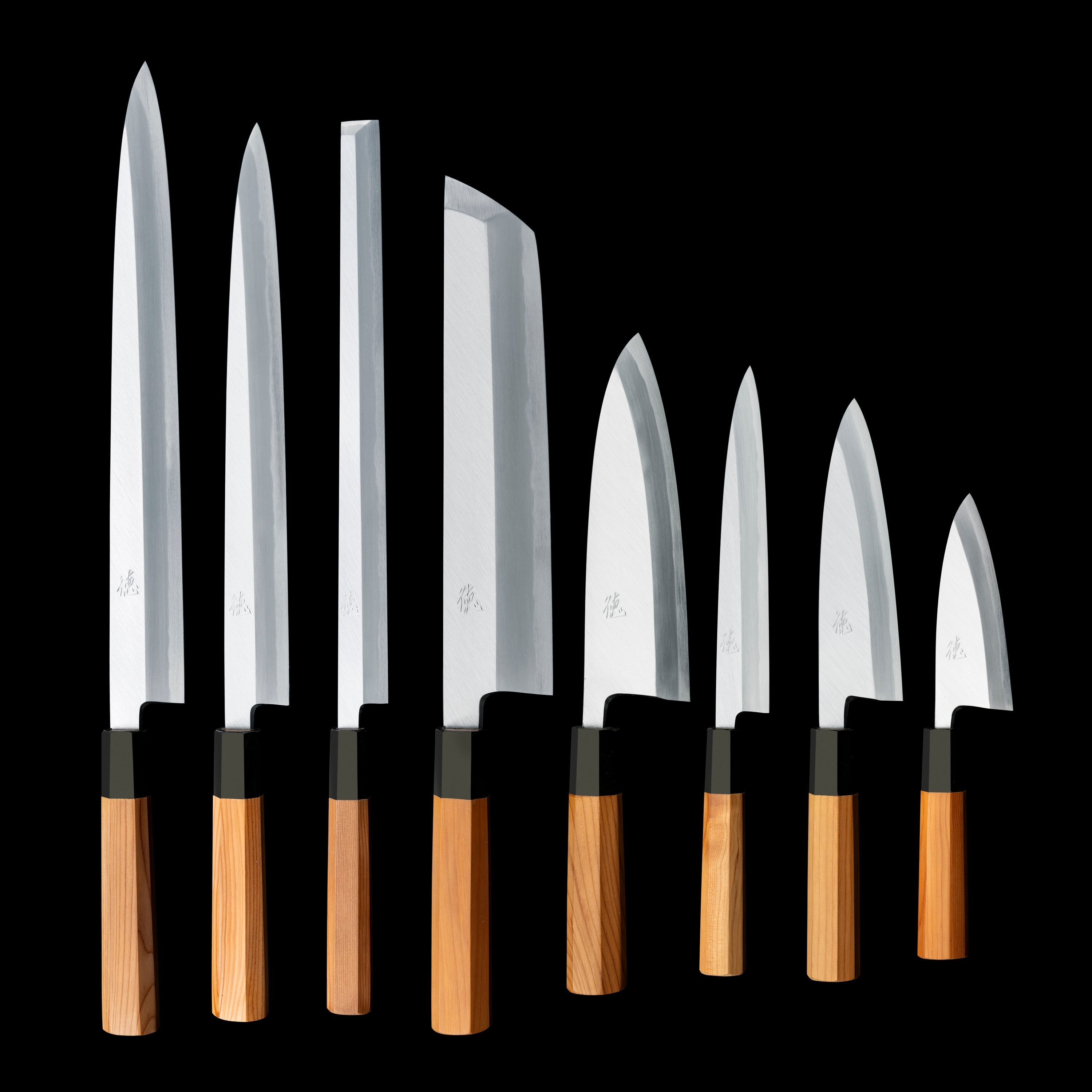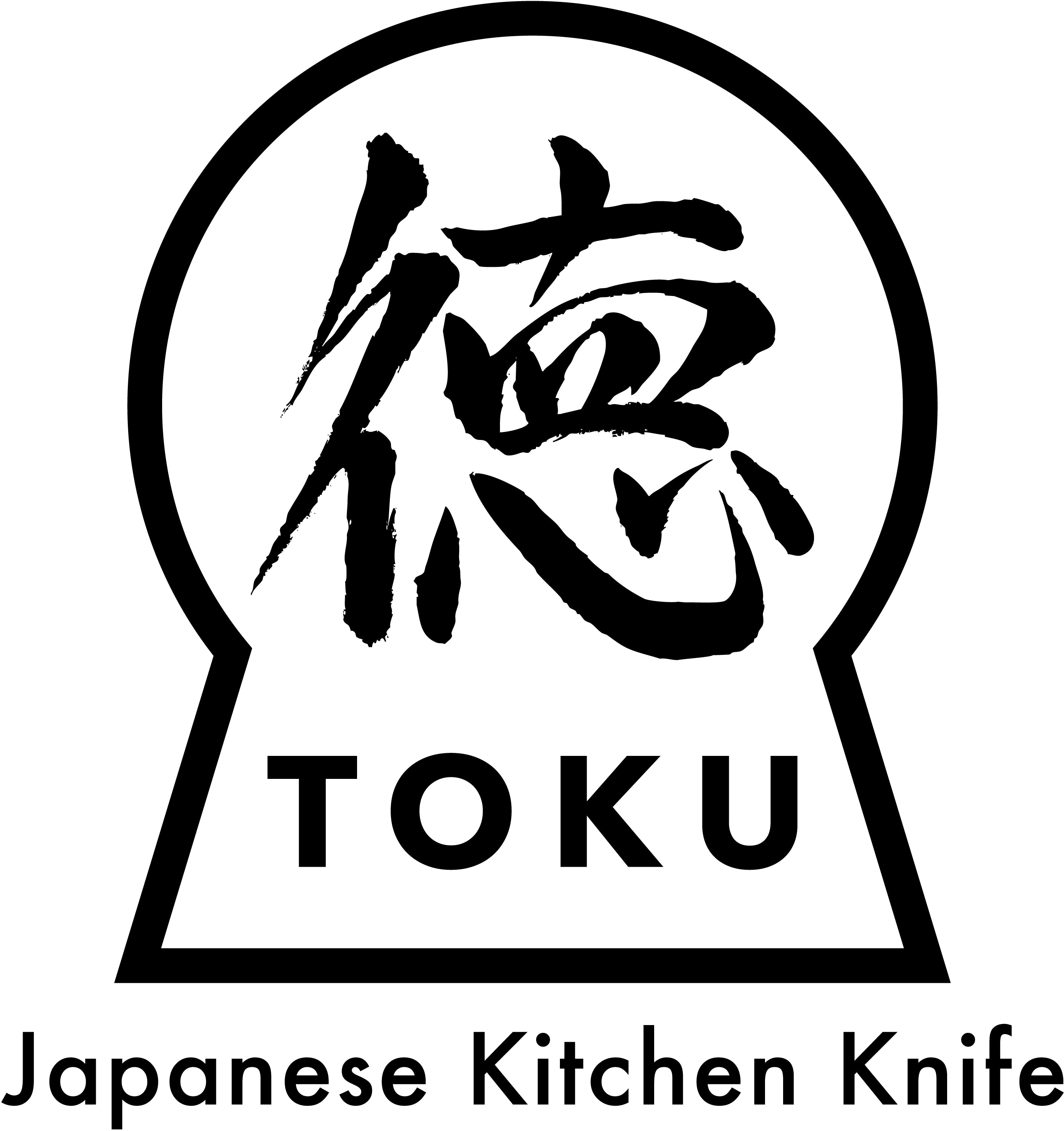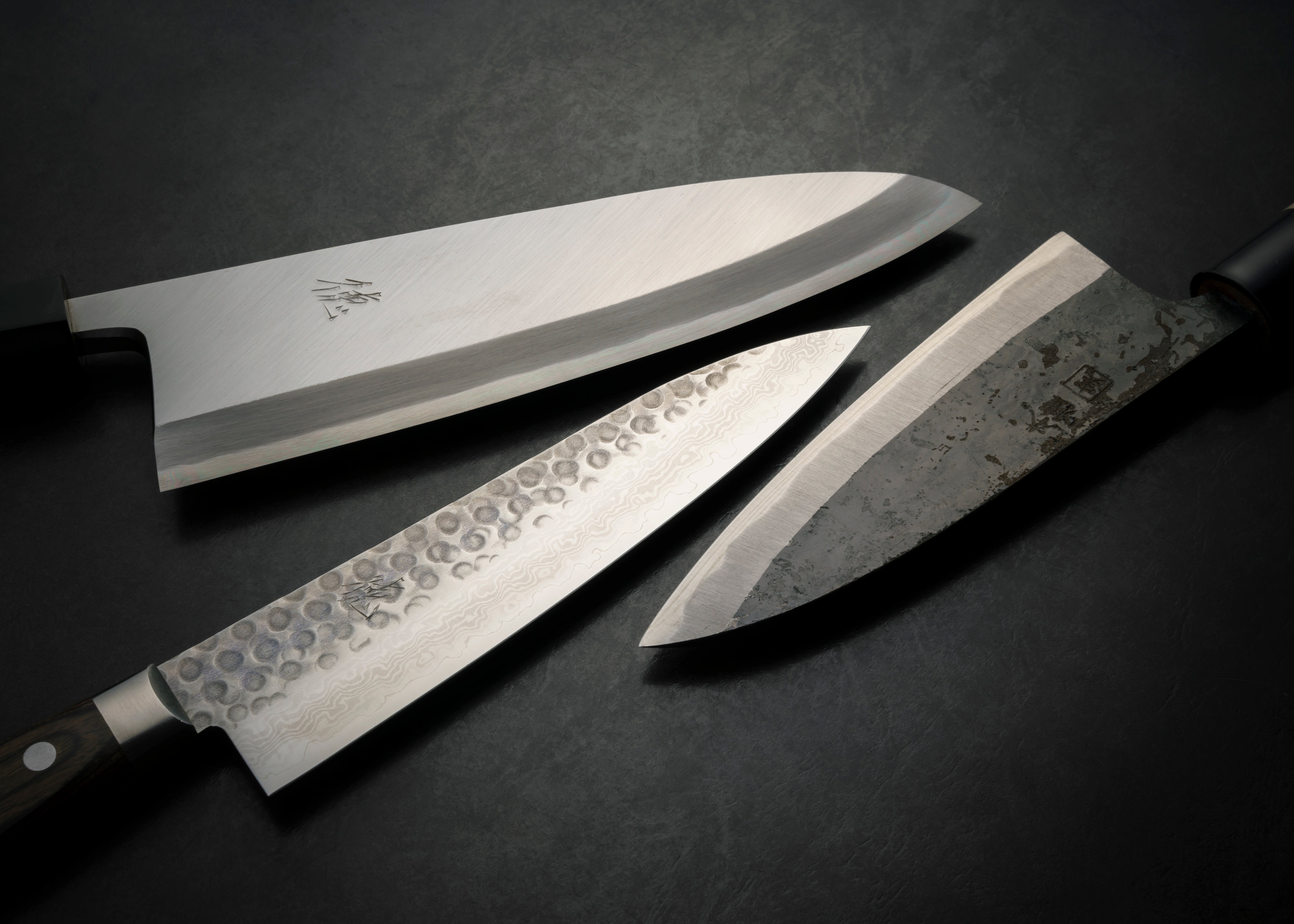
[2025] Guide to Types of Japanese Knives and How to Choose Them
I am Okudaira, the owner of "Japanese Kitchen Knife TOKU''.
We want to sell knives made in our hometown of Sakai, Osaka, so we purchase and sell knives made in Sakai from a knife manufacturer in Sakai.
We don't just sell knives, we visit a number of blacksmiths and bladesmiths in Sakai to help our customers understand knives, experience the actual work, and hear from the craftsmen. I'm here. In addition to Sakai, we also visit Seki in Gifu, Tsubame-Sanjo in Niigata, Tanegashima in Kagoshima and Katsushika in Tokyo, in an effort to deepen our understanding of the characteristics and commitment of each.
Guide to the Types of Japanese Knives and How to Choose Them
Did you know that there are Japanese knives and Western knives?
Japanese knives are single-edged knives that have been used in Japan for a long time. Western knives are double-edged knives that were introduced from overseas after the Meiji period when people started eating beef. Santoku knives are classified as Western knives, but they are knives that originated in Japan after the Meiji period that can be used to cut meat, fish, and vegetables with one knife.
■What is a Japanese knife? Knives that symbolize Japanese food culture
There are three types of Japanese knives: Deba, Yanagiba, and Usuba. When you hear the names of these three knives, many people probably think they are knives used for filleting fish. Before the Edo period, fish was the main diet in Japan, so there are many Japanese knives for filleting fish and preparing sashimi.
■Types and features of Japanese knives
In addition to the Deba knife and Yanagiba knife, there are knives for different types of fish, such as horse mackerel knife, octopus pullers, eel splitters, and conger eel knife. There are also all-purpose fish knives, such as the Funayuki knife that fishermen took with them when they went fishing, and the Mioroshi knife, which combines the Deba knife and sashimi knife.
The main types and uses can be summarized as follows:
・Deba knife : a knife for filleting fish
・Yanagiba knife : a knife for sashimi
・Usuba knife : vegetable knife
・Horse mackerel cutting knife : A knife for cutting small fish such as small horse mackerel
・Takohiki knife : Kanto-style sashimi knife
・Unagi-suki : A knife used to cut open the belly of an eel. It differs in the Kanto, Kansai, and other regions.
・Hamo-kiri knife : A knife for cutting the small bones of hamo.
Both knives are single-edged and designed to suit traditional Japanese cooking methods.
■ How to choose a Japanese knife
If you had to choose your first knife from a range of knives such as a deba, sashimi or usuba, which would it be?
Nowadays, when you go to the supermarket, you will find fish already cut into sashimi or filleted into three pieces. Considering this, I don't think there are many occasions when you will need a deba knife. Therefore, I think the first time you use a Japanese knife, you will buy a fish filleted into three pieces or a fish filleted into a sashimi, and then use it at home to make sashimi.
If you are going fishing by yourself, it would be a good idea to purchase a knife such as a deba knife or an horse mackerel cutting knife.
Please use the following as a guide when selecting the blade length for each knife.
Deba knife: 150mm to 165mm
Yanagiba knife: 210mm to 240mm
Horse mackerel cutting knife: 120mm
Thin blade knife: 165mm to 180mm
In terms of steel, white steel knives are relatively affordable and can be used for a long time.
I recommend steel instead of stainless steel.
Sakaitoku Knives
■Do steel knives not rust?
I'm sure there are people who have had such concerns. Sakai knives are made of steel, but they are treated with rust prevention before shipping, so they will not rust immediately. However, the rust prevention will come off when you resharpen the knife, so it is important to wipe off any water after use.
By the way, even stainless steel knives will rust if left unused. Whether you use a steel knife or a stainless steel knife, you should wash and wipe it after use. This extra step is the secret to using the knife for a long time.
■ It's important to actually touch and check
The best way to buy a knife is to actually try out the weight, balance, and grip. At Sakaitoku Knives, we ask our customers to actually hold the knives and check them out. If there is a product you are interested in, please feel free to ask our staff.
Let's go to a knife store!
Sakaitoku Knife Shop opened a store in Asakusa, Tokyo on April 5th. The store is located on the 6th floor of a building right outside the north exit of Tobu Asakusa Station. It is also about a 3- minute walk from Asakusa Station on the Tokyo Metro Ginza Line.
We also hold sharpening classes and sharpening experiences, so please feel free to stop by if you are in the area.
Access to Sakaitoku Asakusa Knife Store
Sakaitoku Knife Shop also has channels on YouTube , Facebook and Instagram .
Please subscribe and follow our channel.



Leave a comment
This site is protected by hCaptcha and the hCaptcha Privacy Policy and Terms of Service apply.